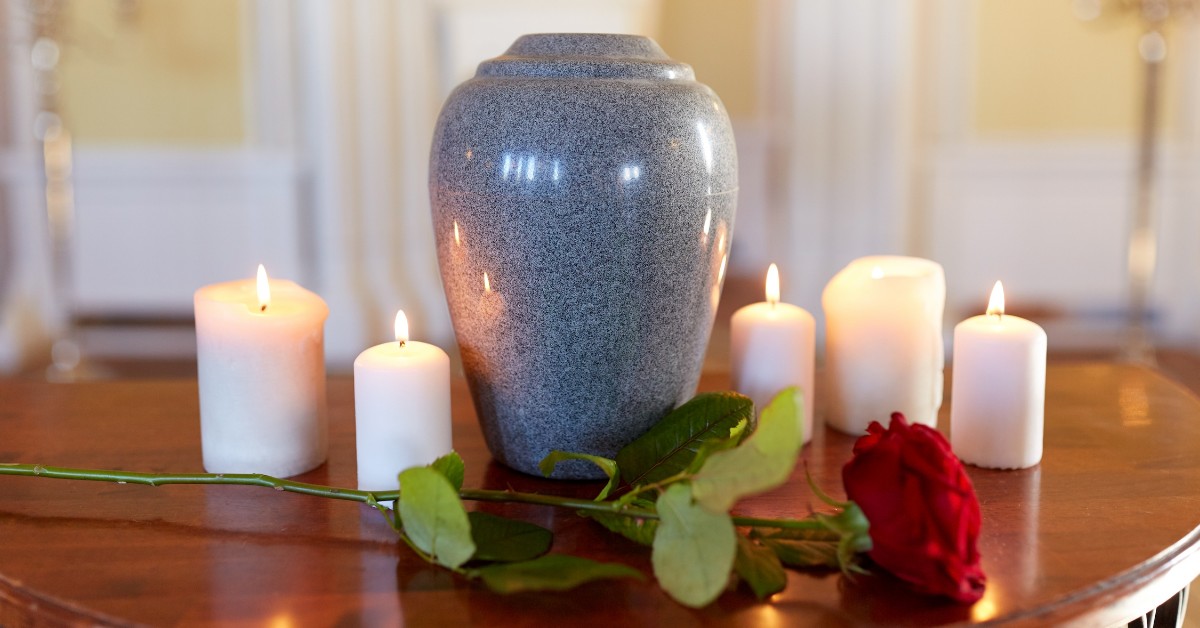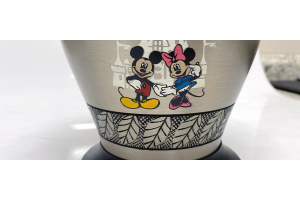
Have you ever wondered what to do with cremated remains? With the annual number of cremations in the United States rapidly closing in on one million people, we’re generating literally tons of cremated remains, a.k.a. cremains, every year. What can you do with your loved ones’ powdered bone fragments? More than you’d think! The top options are to keep, dispose of, or enshrine cremains. Here is my Top Ten list of things you can do with cremated remains, with associated pros and cons for each option.
1) Scatter on land


Pros: It’s free! You can scatter your loved one’s remains at a place they loved to visit. If you are scattering on public land, just don’t do it in front of a park ranger. It’s a “don’t ask, don’t tell” sort of situation. Please get permission if you are scattering on someone else’s private land.
Cons: You can’t put a memorial marker on public land to mark the spot where the scattering occurs. Descendants might get angry when they can’t find where Grandpa’s remains were scattered.
2) Scatter at sea


Pros: It’s a low-cost fitting send-off for someone who loved the sea. The only expense is getting a boat to take you at least three miles offshore, a U.S. maritime requirement. Learn more details here.
Cons: Care must be taken with ocean breezes to avoid the “dust in your face” phenomenon. A biodegradable urn container (paper, cardboard, wicker, etc.) that dissolves after sinking is the answer. Note: Cruise ship management frowns upon throwing anything overboard.
3) Scatter by air


Pros: This is a fitting send-off for free spirits, including balloonists, pilots, hang gliders and bungee jumpers (who may meet their earthly end sooner than other less-adventurous folks). There are also fireworks manufacturers who will mix cremated remains into spectacular pyrotechnic displays.
Cons: Air scattering services and fireworks manufacturing can get pricey. You will not be able to identify a specific spot for their final resting place. (further methods of scattering ashes)
4) Bury in a cemetery


Pros: Cremated remains can be buried in smaller plots that cost less than a full body burial site. Or, depending on the cemetery’s rules, cremains may be interred within a family member’s full sized plot. The family gets a place to visit and remember the deceased.
Cons: Even smaller cremains plots can cost hundreds or thousands of dollars, depending on the cemetery.
5) Bury at home


Pros: Assuming you’ve got a yard at home, it’s free to bury your loved one’s cremated remains. You’ll know they are near. You can mark the spot with a statue, a manufactured marker or a simple rock.
Cons: Whenever you sell the house, you’ll either have to dig up the cremains and take them with you or you must declare the presence of remains on the property. This might adversely affect your property value.
6) Keep an urn at home


Pros: Your loved one’s remains can be enshrined in a beautiful urn set in a special spot. Everyone in the family can remember that loved one and admire the container.
Cons: Ever see that scene from the comedy film Meet The Parents where Ben Stiller is trying to open a bottle of champagne? The cork flies off and hits the ceramic urn on the mantle that holds the cremated remains of Robert DiNiro’s mother, with disastrous results. ‘Nuff said.
7) Place in a columbarium


Pros: A columbarium, a.k.a. columbary, is a place for storing funeral urns, so they give a specific place to visit the deceased. Columbaria are usually located in cemeteries. Some churches have a spot for collecting cremated remains, either keeping them in urn niches or mingling remains in a garden or walled area.
Cons: There is usually a cost associated with obtaining a niche for remains.
8) Share with family


Pros: Cremated remains can be split up among far-flung family members. They can be kept in mini-urns, memorial jewelry, even made into glass or ceramic works of art.
Cons: Some family members may not like this idea. Plus, unless you are using coffee cans, the price of multiple urns or pieces of memorial jewelry can add up, depending on the size of the clan.
9) Create a reef


Pros: There are services that mix cremated remains into concrete structures that build marine reefs. Your loved one’s final resting place is mapped, and you can go scuba diving to visit them.
Cons: While a memorable memorial option, it can cost as much as burial. Visiting the memorial reef site can become a major investment of time and resources.
10) Build a monument


Pros: Speaking of mixing cremated remains in concrete, why not make a monument? You can set it up on your property, or even make it a centerpiece at family reunions!
Cons: Some family members may not be amused. With the U.S. cremation rate now exceeding 41% and growing, more and more families will be considering these options. If you want to be cremated, figure out your preference and let your family know. Help them avoid the agony of having to decide for you. You’ll be glad you did.
About the author: Gail Rubin, The Doyenne of Death™, is author of A Good Goodbye: Funeral Planning for Those Who Don’t Plan to Die and The Family Plot Blog. A Certified Celebrant and an event planner experienced in funerals, she’s also a breast cancer survivor who speaks regularly to groups on getting the funeral planning conversation started. Rubin is a member of the Association for Death Education and Counseling and the International Cemetery, Cremation and Funeral Association. She also serves on the cemetery committee for Congregation Albert and volunteers with the Chevra Kaddisha, which ritually prepares bodies for Jewish burial. Her web site is http://AGoodGoodbye.com.





